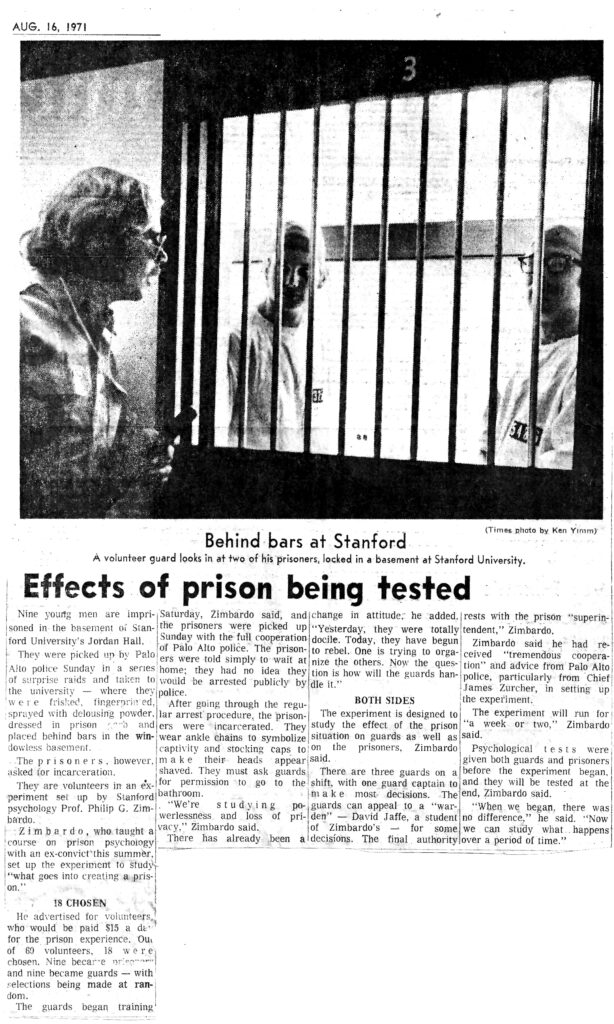My family and I saved some newspaper clippings around the time of the experiment.
This story was published the day after it started.
(Click the image to open it. Scroll down for the transcribed text)

Effects of prison being tested
Nine young men are imprisoned in the basement of Stanford University’s Jordan Hall. They were picked up by Palo Alto Police Sunday in a series of surprise raids and taken to the university where they were frisked, fingerprinted, sprayed with delousing powder, dressed in prison garb and placed behind bars in the windowless basement. The prisoners, however, asked for incarceration.
They are volunteers in an experiment set up by Stanford psychology professor Philip G. Zimbardo. Zimbardo, who taught a course on prison psychology with an ex-convict this summer, set up the experiment to study what goes into creating a prison.
18 CHOSEN
He advertised for volunteers who would be paid $15 a day for the prison experience. Out of 60 volunteers, 18 were chosen. Nine became prisoners and nine became guards with selections being made at random. The guards began training Saturday, Zimbardo said, and the prisoners were picked up Sunday with the full cooperation of Palo Alto Police. The prisoners were told simply to wait at home. They had no idea they would be arrested publicly by police. After going through the regular arrest procedure, the prisoners were incarcerated. They wear ankle chains to symbolize captivity and stocking caps to make their heads appear shaved. They must ask guards for permission to go to the bathroom. We’re studying powerlessness, and loss of privacy, Zimbardo said. There has already been a change in attitude, he added. Yesterday, they were totally docile. Today, they have begun to rebel. One is trying to organize the others. Now the question is, how will the guards handle it?
BOTH SIDES
The experiment is designed to study the effect of the prison situation on guards as well as on the prisoners, Zimbardo said. There are three guards on a shift with one guard captain to make most decisions. The guards can appeal to a warden, David Jaffe, a student of Zimbardo’s, for some decisions. The final authority rests with the prison superintendent, Zimbardo. Zimbardo said he had received tremendous cooperation and advice from Palo Alto Police, particularly from Chief James Zurcher in setting up the experiment. The experiment will run for a week or two, Zimbardo said. Psychological tests were given both guards and prisoners before the experiment began, and they will be tested at the end, Zimbardo said. When we began, there was no difference. Now we can study what happens over a period of time.
